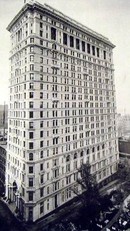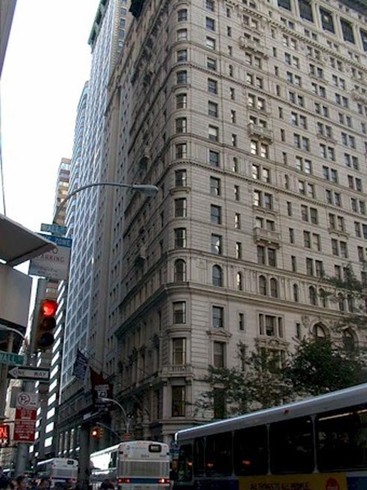Empire Building, Manhattan
Introduction
Text-to-speech Audio
Images
A view of the building in 1898.

A recent photo of the Empire Building

Backstory and Context
Text-to-speech Audio
In 1853, Orlando Potter, a lawyer from Massachusetts, moved to New York City to offer his services in developing a sewing machine business. Potter quickly became a prominent member of high society in New York City, known to be an incredibly wealthy man. Potter died in 1894, and his estate commissioned the construction of the Empire Building in 1895.
Architects Francis Kimball and George Thompson worked to design the building, and construction on it began in 1895. The construction took several years to complete, and in 1898, the building was finished. Several years after the building’s construction, the newly formed United States Steel Corporation became the building’s primary tenant, and it would remain the building’s single largest tenant for 75 years.
Initially, the United States Steel Corporation only rented out portions of the Empire Building from the Potter Estate, and the building was a source of pride to the family of the late Orlando Potter. However, in 1919, the Potter family fell into financial troubles, and by this point in time, the United States Steel Corporation had gained some extensive momentum as a corporation and an impressive amount of capital.
As a result, the Potter Estate decided to sell the building to the United States Steel Corporation, which benefitted both parties immensely. Decades later, the corporation sold the building in 1973 but remained in the building until the 1980s. On June 25, 1996, it was designated as a New York City Landmark, and in 1997, it was purchased and converted into an apartment complex. One year later, on August 28, 1998, it was added to the National Register of Historic Places.
